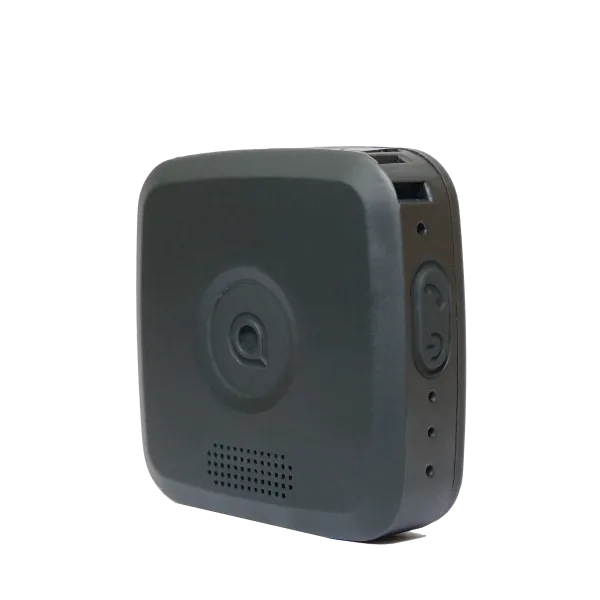
Lone Worker Risk Assessment: Guide and Template
Lone Worker Risk Assessments are key to controlling hazards and keeping people safe. We explain the 5 steps to follow and provide a template to download.
What is a lone worker risk assessment?
A generic Risk Assessment identifies potential hazards in the working environment, establishes the risk that someone or something might be harmed because of one of these hazards, and highlights control measures to mitigate the risks.
The main objective is to keep people safe by reducing the chances of someone (staff, customers or members of the public) suffering an injury or ill health, and ensuring a minimal impact on property and/or business operations.
A lone worker risk assessment specifically looks at the risks lone or remote workers face, particularly given there are no colleagues in the vicinity to support them should an incident occur.

Lone Worker Risk Assessments: Your responsibilities
Despite the fact no legislation in the UK specifically addresses the safety of lone workers, the law does state that employers must protect their employees (lone working or otherwise) from harm.
The Management of Health and Safety at Work Regulations 1999 identifies the minimum legal requirements:
- Identify hazards that could cause injury or illness,
- Identify the level of risk and likelihood that someone could be harmed,
- Put measures in place to reduce, control or remove potential hazards to employees.
It's also important to remember that homeworkers are also lone workers so you should consider the safety risks to employees working from home or remotely. Take a look at our Protect Your Homeworkers page.
5 steps to a lone working risk assessment
£26.9 million in fines were issued to duty holders in breach of Health and Safety Executive (HSE) regulations in 2020-21. Therefore, it’s important to get your risk assessments right.
HSE identify five simple steps that are required to successfully manage risk (which echo the minimum regulatory requirements above):
- Identify hazards
- Assess the risks
- Control the risks
- Record your findings
- Review the controls
We’ll take a look at each of these steps …
1. What hazards do lone workers face?
In our article 6 types of workplace hazards and how to spot them, we outline the 6 types of workplace hazards to look out for and provide examples for each: safety (e.g. a wobbly step), physical/environmental (e.g. extreme temperatures), biological (e.g. bacteria), chemical (e.g. corrosive liquids), ergonomic (e.g. manual handling), and psychosocial (e.g. violence).
Within this checklist, you may identify some or all of these to varying degrees within your organisation.
To ensure you’ve captured them all, it’s important to liaise with workers across all roles and seniorities. It’s common for lone workers to raise scenarios such as:
- Entering people’s homes alone
- Travelling to multiple locations
- Visiting remote areas
- Working at night.
Ask them to consider the specific hazards they encounter during these activities.
2. What are the risks to lone workers?
You should consider each hazard and agree on the likelihood of someone being caused harm. This will then help you to decide on appropriate control measures in point 3.
You should bear in mind that the risk of most hazards causing harm can be amplified for those who work alone. This is because there’s no one around to see or hear if a problem arises, no one to provide hands-on support and no one to call for help.
There is also an increased risk of serious damage or fatality following a sudden health issue such as a heart attack or stroke.
3. How can risks to lone workers be controlled?
Identifying control measures is a vital part of the Risk Assessment process. This is about how you will minimise the risks to your lone workers.
Your control measures will vary depending on the hazards and risks you identify, however, they may include things such as:
- Encouraging colleagues to complete regular Dynamic Risk Assessments
- Providing training on how to deal with violence or aggression
- Providing appropriate Personal Protective Equipment (PPE)
- Only completing certain tasks in daylight hours
- Equipping workers with a lone worker safety solution or app that will allow them to discreetly call for help in an emergency.
Once again, speak to your colleagues. Often the people on the ground are best placed to suggest how risks can be reduced.

4. Download an example Lone Worker Risk Assessment template
Whether you’re just starting out or updating an existing document, our example lone worker risk assessment template will help to ensure you successfully record your findings.
5. Risk Assessment reviews
A Lone Worker Risk Assessment shouldn’t be a static document. It needs to be updated as and when roles, responsibilities, policies and procedures change.
It should also be updated following any incidents to establish whether more could have been done to either prevent the incident from occurring or to reduce the impact.
Your Risk Assessment would normally be updated alongside your Lone Working Policy.
If you have any questions, please don't hesitate to contact us.









.png)
